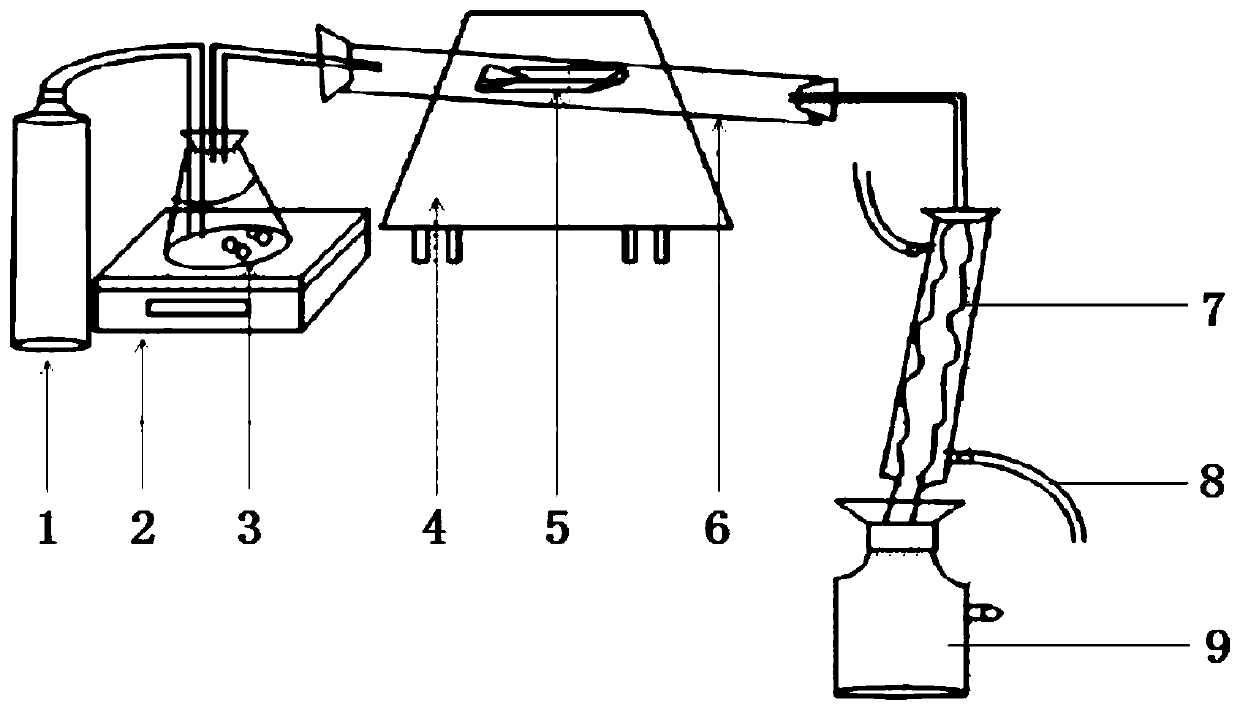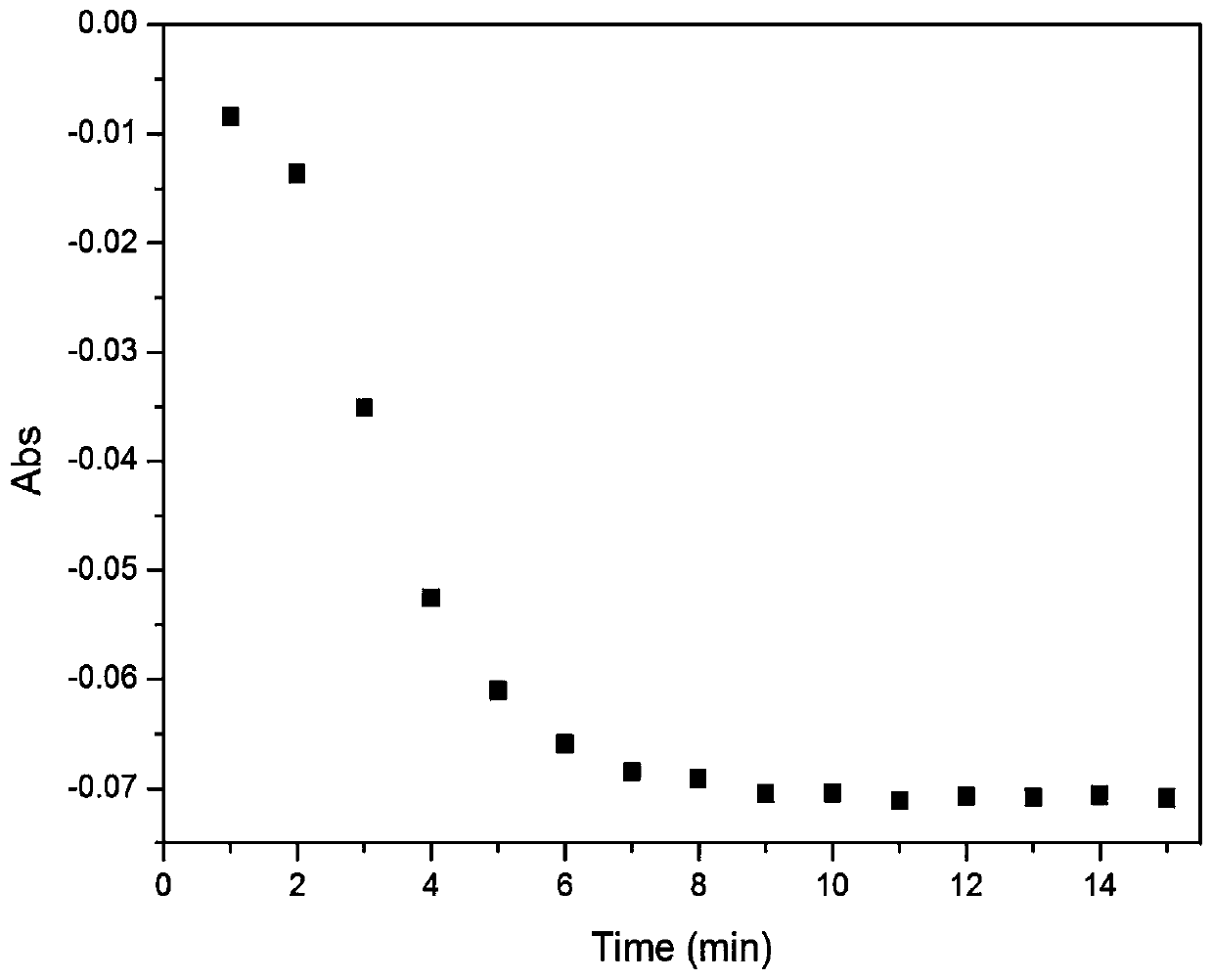Detection method of surface fluoride ions of non-ferrous metal material
A technology for non-ferrous metals and detection methods, which is applied in the measurement of color/spectral properties, analysis by chemical reaction of materials, and material analysis by observing the impact on chemical indicators, which can solve the problem of high residual detection line and residual amount. Insufficient, inaccurate residues, etc., to achieve the effect of low sample detection limit, stable absorbance, and large detection concentration range
- Summary
- Abstract
- Description
- Claims
- Application Information
AI Technical Summary
Problems solved by technology
Method used
Image
Examples
Embodiment 1
[0035] Example 1: Assembly of the sample processing device
[0036] The sample processing device is composed of three parts: steam generating device, heating device and fraction collecting device, which are sequentially connected and assembled, such as figure 1shown. The water vapor generating device is composed of a nitrogen cylinder (1), an electric furnace (2), an Erlenmeyer flask (3) and a connecting conduit. The Erlenmeyer flask is sealed with a perforated (2-hole) rubber stopper, and a rubber conduit is used to connect the nitrogen cylinder. The Erlenmeyer flask is located on the upper part of the electric furnace. The distilled water in the Erlenmeyer flask is heated by the electric furnace. The steam generated by the heated distilled water is transported by the nitrogen gas introduced into the Erlenmeyer flask to another glass tube connected with a rubber hole and then sent to the non-ferrous metal heating device. The non-ferrous metal heating device consists of a tub...
Embodiment 2
[0037] Example 2: Determination of fluoride ions on the surface of non-ferrous metals - determination of fraction collection time
[0038] Select a batch of qualified flaw detection, qualified chemical composition, and qualified mechanical properties test as a φ6.08×0.54mm×L zirconium tube, and use a CNC lathe to make 50 samples (pieces) of the selected zirconium tube with a length of 100mm, of which Fifteen (pieces) were used in this example, and the remaining samples were used in other examples described below. According to attached figure 1 After assembling the steam generator, non-ferrous metal heating device, and fraction collection device as shown, turn on the nitrogen gas at the end of the steam generator, and feed nitrogen into the device at a ventilation rate of 15mL / min. After ventilating for 10 minutes, turn on the electric furnace, adjust the steam generator until the deionized water contained in the device remains boiling, and adjust the nitrogen ventilation rate...
Embodiment 3
[0041] Example 3: Determination of fluoride ions on the surface of non-ferrous metals——determination of the heating temperature of non-ferrous metals
[0042] Get 18 (pieces) zirconium tubes that have not been processed for test samples in Examples 1 and 2, and according to the steps described in Example 1, the samples are respectively processed and fractions are collected. Similarly, the fraction collected before treatment at 1150°C was used as a matrix blank, and the above samples and the matrix blank were each added with a chromogen and then constant volume. Starting from the blank of the matrix as a reference at 540nm in the UV-Vis spectrophotometer, the above-mentioned 18 samples were tested within 5 to 90 minutes, and the test results are as follows: Figure 4 shown. From the test results, it can be found that F - After being combined with the chromogenic agent xylenol orange, the absorbance tends to increase with the increase of the storage time, and the absorbance sh...
PUM
| Property | Measurement | Unit |
|---|---|---|
| wavelength | aaaaa | aaaaa |
Abstract
Description
Claims
Application Information
 Login to View More
Login to View More - R&D
- Intellectual Property
- Life Sciences
- Materials
- Tech Scout
- Unparalleled Data Quality
- Higher Quality Content
- 60% Fewer Hallucinations
Browse by: Latest US Patents, China's latest patents, Technical Efficacy Thesaurus, Application Domain, Technology Topic, Popular Technical Reports.
© 2025 PatSnap. All rights reserved.Legal|Privacy policy|Modern Slavery Act Transparency Statement|Sitemap|About US| Contact US: help@patsnap.com



